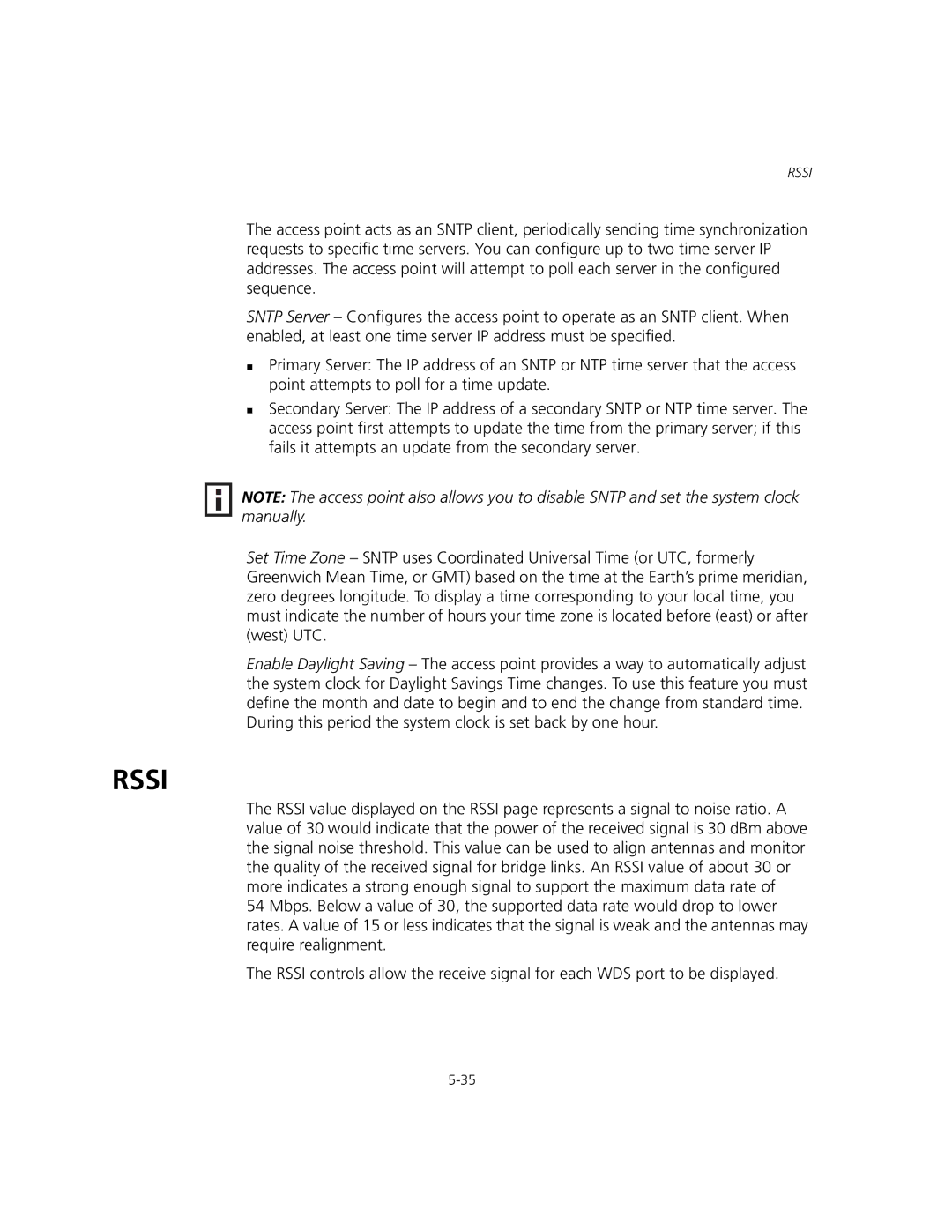RSSI
The access point acts as an SNTP client, periodically sending time synchronization requests to specific time servers. You can configure up to two time server IP addresses. The access point will attempt to poll each server in the configured sequence.
SNTP Server – Configures the access point to operate as an SNTP client. When enabled, at least one time server IP address must be specified.
Primary Server: The IP address of an SNTP or NTP time server that the access point attempts to poll for a time update.
Secondary Server: The IP address of a secondary SNTP or NTP time server. The access point first attempts to update the time from the primary server; if this fails it attempts an update from the secondary server.
NOTE: The access point also allows you to disable SNTP and set the system clock manually.
Set Time Zone – SNTP uses Coordinated Universal Time (or UTC, formerly Greenwich Mean Time, or GMT) based on the time at the Earth’s prime meridian, zero degrees longitude. To display a time corresponding to your local time, you must indicate the number of hours your time zone is located before (east) or after (west) UTC.
Enable Daylight Saving – The access point provides a way to automatically adjust the system clock for Daylight Savings Time changes. To use this feature you must define the month and date to begin and to end the change from standard time. During this period the system clock is set back by one hour.
RSSI
The RSSI value displayed on the RSSI page represents a signal to noise ratio. A value of 30 would indicate that the power of the received signal is 30 dBm above the signal noise threshold. This value can be used to align antennas and monitor the quality of the received signal for bridge links. An RSSI value of about 30 or more indicates a strong enough signal to support the maximum data rate of
54 Mbps. Below a value of 30, the supported data rate would drop to lower rates. A value of 15 or less indicates that the signal is weak and the antennas may require realignment.
The RSSI controls allow the receive signal for each WDS port to be displayed.
